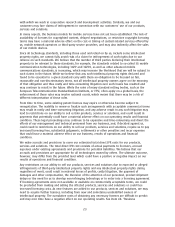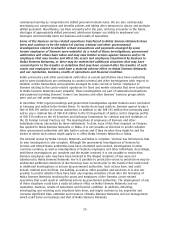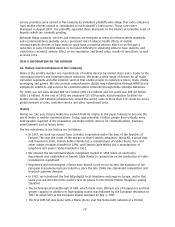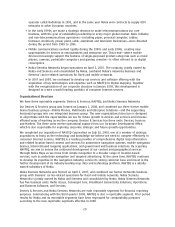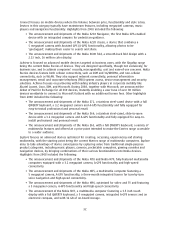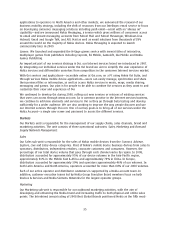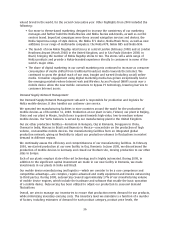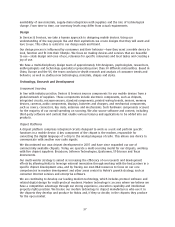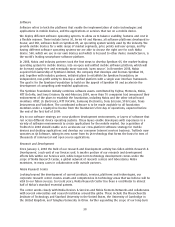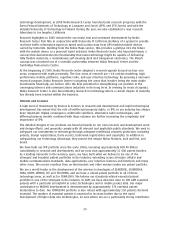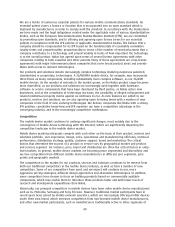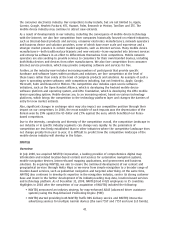Nokia 2008 Annual Report Download - page 32
Download and view the complete annual report
Please find page 32 of the 2008 Nokia annual report below. You can navigate through the pages in the report by either clicking on the pages listed below, or by using the keyword search tool below to find specific information within the annual report.content, a competitive portfolio means offering valueadded services which are easy to access and use
and positively differentiates us from our competition.
Nokia mobile devices are developed and produced by our Devices & Services group. We shipped a
total of 468 million mobile devices in 2008, representing growth of 7% compared with 2007. Based
on an estimated global market volume for mobile devices of 1.21 billion units for 2008, our
estimated fullyear global market share increased to 39% from an estimated 38% for 2007. This
further strengthened our leading position in the global mobile device market—a position Nokia has
held since 1998.
Nokia mobile devices are primarily based on the GSM/EDGE, 3G/WCDMA and CDMA global cellular
standards, and also increasingly feature noncellular technologies such as Bluetooth, WLAN and GPS.
Our higherend converged devices, such as our Nokia Nseries and Nokia Eseries smartphones, typically
offer the functionalities of many portable singlepurpose devices—such as megapixel cameras, music
players, computers, gaming consoles and navigation devices—in a single, converged device. In 2008,
we shipped a total of 61 million converged devices.
In 2008, Nokia and industry partners took the first steps to develop Symbian OS, the marketleading
operating system for mobile devices, into an open and unified mobile software platform, which will
eventually move towards ‘open source’. In December 2008, Nokia acquired full ownership of Symbian
Limited, the company that develops and licenses Symbian OS, and, together with industry partners,
initiated plans to establish the Symbian Foundation, an independent, nonprofit entity to lead this
development.
Our Devices & Services group is comprised of three units—Devices, Services, and Markets—each of
which is outlined in the following sections.
Devices
Our Devices unit is responsible for developing and managing our mobile device portfolio, including
the sourcing of components. The unit consists of the following four operational subunits:
•
Research and Development
, responsible for developing innovative ways to improve the
performance and quality of our mobile devices and optimize the experience consumers have in
using them;
•
Design
, focused on enhancing the look, feel, quality, durability and usability of our mobile
devices as well as maximizing their relevance for specific consumers and their conformity to
local tastes;
•
Category Management
, responsible for defining our device product strategy, conceptualizing
new devices and managing our product portfolio, and;
•
Focused Businesses
, which comprises three deviceled businesses distinct from our mainstream
mobile devices business:
CDMA
, which works together with codevelopment partners to
support operators that use CDMA technology, with a particular focus on the United States;
Nokia Gear
, which is responsible for device enhancements, such as Bluetooth headsets and
carrying cases; and
Vertu
, a manufacturer and retailer of luxury mobile phones that sells
products through 20 Vertu stores and over 600 points of sale across approximately
65 countries.
Our R&D, design and category management subunits are each aligned with five product categories,
which represent target segments for Nokia’s mobile device portfolio:
Connect, Achieve
,
Explore
,
Live
and
Entry
.
31




